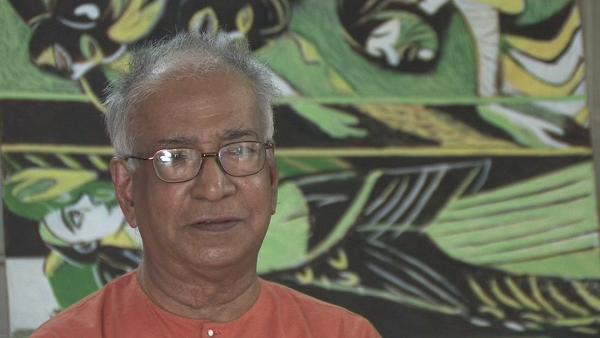NEXT STORY

Depicting death
RELATED STORIES

NEXT STORY

Depicting death
RELATED STORIES



When you came back to Baroda as a teacher, was there a sense in which you were pushing slightly against the dominance of abstraction and towards... true, it was at a certain time you might call a post-Bendre phase.
At the time this school started, I mean there was one side, Bendre, who was very much taken up with what was called the high mark, the high water mark, so modern art, like the work of Picasso, Braque, Matisse, this sort of a thing, and then later of course even those action painters. He even sort of showed his students some of the examples of this work. They were affected by what he... but at that time a person like me was saying that well, they should be as sort of seriously affected by what they see around and what they see in their tradition, which is not terribly different. Maybe they are different in outlook, but in terms of the object. So there was, and later when I came to be the head of the department, I wanted that this extent, to the extent of you are reacting to the scene around, and some of my younger colleagues and then some of my sort of students, as resourceful students of that time, they caught up with it and they sort of took it into the field of sort of an emotional reaction, or trying to sort of interpret what is going around, or symbolise what is going around. That was there and I was very happy to do it.
KG Subramanyan (1924-2016) was an Indian artist. A graduate of the renowned art college of Kala Bhavana in Santiniketan, Subramanyan was both a theoretician and an art historian whose writings formed the basis for the study of contemporary Indian art. His own work, which broke down the barrier between artist and artisan, was executed in a wide range of media and drew upon myth and tradition for its inspiration.
Title: Teaching students to embrace tradition and their environment
Listeners: Timothy Hyman
Timothy Hyman is a graduate of Slade School of Fine Art, London, in which he has also taught. In 1980 and 1982, he was Visiting Professor in Baroda, India. Timothy Hyman has curated many significant art exhibitions and has published articles and monographs on both European and Indian artists.
Duration: 2 minutes, 11 seconds
Date story recorded: 2008
Date story went live: 10 September 2010